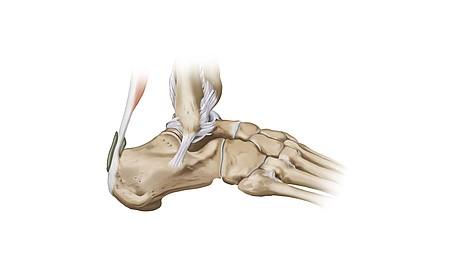Causes and symptoms
The cause is usually twisting the ankle by tripping or slipping, falling on the turned ankle while skiing, a fall from a greater height, road traffic accidents and the effects of direct trauma. In essence then, it is a traumatic injury. Depending on the severity and the exact position of the fracture, it may be necessary to wear a plaster cast or orthosis or even have surgery.
The most conspicuous symptoms of this injury are considerable pain on movement, e.g. during rollover over the foot, progressive swelling and skin discolouration around the ankle. An unusual foot position and even open fractures, where the bone pierces the skin, together with a complete loss of function of the foot are possible.
Therapy
Treatment of fractures of the ankle starts at the site of the accident, usually by the emergency doctor, who repositions the foot to avoid any further damage to the soft tissues, nerves and blood vessels.
The leg is then immobilised with a splint until the patient arrives at hospital.
Non-surgical treatment is possible for all fractures of the ankle joint in which the bones are not dislocated and for those without any damage to the ligamentous connection between the shinbone and the fibula (syndesmosis). As a rule, prompt surgery is also not considered for patients with severe illnesses who have higher surgical risks, for instance, in the case of severe circulatory disorders of the legs, leg ulcers or forefoot infections.
Once the swelling of the ankle joint has subsided with immobilisation in a plaster splint or a split plaster cast, a full plaster cast is applied. After the plaster cast has been removed and the ankle X-rayed, weight-bearing can be increased. However, patients with simple fractures of the outside of the ankle can bear their full weight on the ankle as soon as it is in plaster.
If surgery is unavoidable
If there is dislocation of the bones in an ankle fracture, an operation is necessary. Surgery is also required if the syndesmosis is damaged – this is the ligamentous connection between the shinbone and the fibula – but only if both ligaments have ruptured. Prompt surgery – within a few hours – is unavoidable for serious injuries such as open fractures, damage to nerves and blood vessels and fractures with severe soft-tissue injury. If the ankle is severely swollen, surgery must be delayed until the swelling has subsided, as otherwise the danger of infection increases considerably. The lower leg is immobilised in a plaster splint or a split plaster cast until the swelling of the ankle joint has gone down. The leg should be elevated and cooled during this time.
Exercises to tense the muscles should be started while the patient is still in plaster to prevent muscle atrophy and thrombosis. So-called thrombosis prophylaxis must be carried out until full weight-bearing is achieved. This involves physiotherapy and painless daily injections of a heparin derivative into the fatty tissues in the abdominal wall or the thigh. Once the plaster cast has been removed, the patient must have intensive physiotherapy to restore the mobility of the ankle joint.



